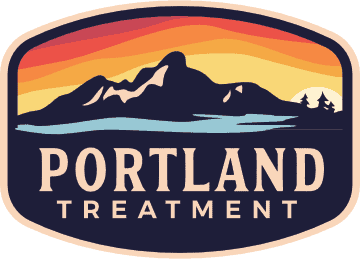Learn about the key differences between residential vs inpatient treatment to help determine the best level of care you need.
Understanding the Differences: Residential vs. Inpatient Treatment for Mental Health and Substance Use
When exploring treatment options for mental health or substance use disorders, many individuals and their families find themselves weighing inpatient and residential programs. Understanding the distinctions between inpatient vs residential care—as well as outpatient alternatives—is essential for making informed decisions about the best care level for you or your loved one [1].
Defining Inpatient Treatment
Inpatient treatment refers to a medical model of care provided in a hospital or similar healthcare facility. It typically involves:
- Intensive medical oversight
- Round-the-clock supervision by healthcare professionals
- Immediate medical intervention capability [2]
Patients requiring inpatient care often face severe mental health crises, substance withdrawal symptoms, or acute medical conditions that necessitate continuous medical monitoring.
Defining Residential Treatment
Residential treatment facilities provide structured therapeutic support outside a hospital environment. These programs:
- Offer a safe, supportive community atmosphere
- Include intensive therapeutic activities and structured daily routines
- Allow patients more freedom than inpatient facilities while still providing continuous oversight [3]
Residential care is ideal for individuals who don’t require constant medical supervision but need ongoing structured therapeutic intervention.
Key Differences: Residential vs Inpatient Mental Health Treatment
Understanding the key differences helps clarify the best fit:
- Medical Intensity: Inpatient treatment has higher medical intensity compared to residential, focusing on stabilization.
- Environment: Residential care often mimics a home-like atmosphere, emphasizing long-term recovery and daily life skills.
- Length of Stay: Residential treatment typically involves longer stays, facilitating deeper therapeutic engagement [4].
Exploring Outpatient Treatment Options
For those who require less intensive care, outpatient rehab programs—such as Intensive Outpatient Programs (IOP) and Partial Hospitalization Programs (PHP)—provide structured care while allowing individuals to maintain employment, education, or family obligations. This option is excellent for those who have completed inpatient or residential treatment or require less intensive therapeutic services [5].
Deciding Between Inpatient, Residential, and Outpatient Rehab
When deciding the most appropriate level of care, consider these factors:
- Severity and type of disorder
- Presence of co-occurring medical or psychiatric conditions
- Level of family and community support available
- Personal responsibilities and flexibility needed during treatment [6]
Finding The Right Facility Near You
If you’re considering residential treatment options, local resources can help you find mental health residential facilities that meet your specific needs. Connecting with treatment providers in your area ensures you receive tailored support and ongoing community integration [7].
Frequently Asked Questions (FAQs)
What’s the main difference between inpatient and residential treatment?
Inpatient treatment provides intensive medical supervision, typically in a hospital. Residential treatment offers structured therapeutic care in a home-like environment without constant medical oversight.
Is residential treatment the same as inpatient care?
No, residential treatment is less medically intensive and can be longer-term than inpatient care, focusing on therapeutic community living rather than immediate medical stabilization.
What is inpatient therapy?
Inpatient therapy involves receiving mental health or substance use treatment in a hospital or similar setting, providing continuous medical supervision and structured therapeutic intervention.
Sources:
- American Psychological Association. (2020). Clinical practice guidelines for the treatment of posttraumatic stress disorder. Retrieved from https://www.apa.org/ptsd-guideline
- National Alliance on Mental Illness. (2021). Mental health treatment types. Retrieved from https://www.nami.org/About-Mental-Illness/Treatments
- National Institute on Drug Abuse (NIDA). (2022). Treatment approaches for drug addiction. Retrieved from https://nida.nih.gov/publications/drugfacts/treatment-approaches-drug-addiction
- Substance Abuse and Mental Health Services Administration (SAMHSA). (2021). Behavioral health treatments and services. Retrieved from https://www.samhsa.gov/find-help/treatment
- Substance Abuse and Mental Health Services Administration (SAMHSA). (2022). Levels of care for substance use disorders. Retrieved from https://www.samhsa.gov/find-help/addiction-substance-use-treatment
- U.S. Department of Veterans Affairs. (2021). Inpatient and residential treatment. Retrieved from https://www.va.gov/health-care/health-needs-conditions/mental-health/inpatient-residential-treatment/
- World Health Organization. (2020). Management of substance abuse. Retrieved from https://www.who.int/health-topics/substance-abuse#tab=tab_1





